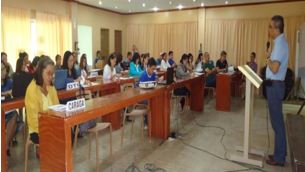
The Fisheries Women Entrepreneurs’ Forum conducted in July, 2017 identified some of the products with export potential, such as black tiger shrimp, prawns, crabs, tuna, abalone, lobster, octopus, cuttlefish, milkfish, seaweeds, groupers, squids, eel, siganids, and hair tail as products with export potential.
Conducted by the Philippine Council for Agriculture, Aquatic and Natural Resources Research and Development (PCAARRD) of the Department of Science and Technology, National Network of Women in Fisheries Inc (WINFISH) and the Bureau of Fisheries and Aquatic Resources (BFAR RO 13), the forum identified problems that affect the country’s fish and fishery products, as well as the necessary measures required to help the SMEs who are engaged in these products.
Problems on live fish and fishery products business include the inadequate supply of raw materials, postharvest losses, wastage in processing, poor quality products, adulterated raw materials, irregularity of supply, and stringent export requirement.
In terms of marketing and export of live and frozen fish and fishery products, the problems were on obtaining export requirements, competition with other countries, registration requirements, and multilayer- marketing system.
Several measures were identified to address these concerns. These include providing SMEs with trainings and seminars, technical assistance, investment on R & D, and access to foreign markets.
The forum also determined the need for processors to be knowledgeable on the rules and regulations in trade and export of fish and fishery products, competitive and sustainable development/continued expansion of aquaculture, European market for exportable fishery products, agreement for market access for fish and fishery products, trade rules and regulatory cooperation, intellectual property rights, services and investment, and public procurement.
In the development of live and frozen fish and fishery products export business, needs include the link with the present exporters, organization of exporters, updated training on fish handling and orientation on food safety (GMP, SSOP & HACCP), technical assistance on packaging/labeling, and improvement in the fish handling protocols.
At present, processors feel that the fish and fishery product business has a big opportunity to expand with the help of government agencies.
Through the forum, the participants learned the potentials of live and frozen fish and fishery products; export business and its requirements; market matching; linkages for export and marketing strategies; and technical, financial and equipment assistance being offered by government agencies like DOST, BFAR, and DTI.
Knowledge gained from the forum will help the community enhance awareness on fishery products with export potentials, share information with fisherfolk and women to become entrepreneurs and exporters, disseminate information through training, and upgrade enterprises with new technologies.
Finally, the forum also came up with some recommendations on how to enhance the export industry for live and frozen fish and fishery products. Among these were the branding of fishery products, adoption of export and certification requirements by the SMEs, awareness on international product standards, provision of public plant for processing, improvement in fishery products, participation of SMEs in the forum, and expansion of production.
With this joint activity, SMEs were encouraged to collaborate and link with the key export players and government agencies to ensure the development of the live and frozen fish and fishery products industry.

